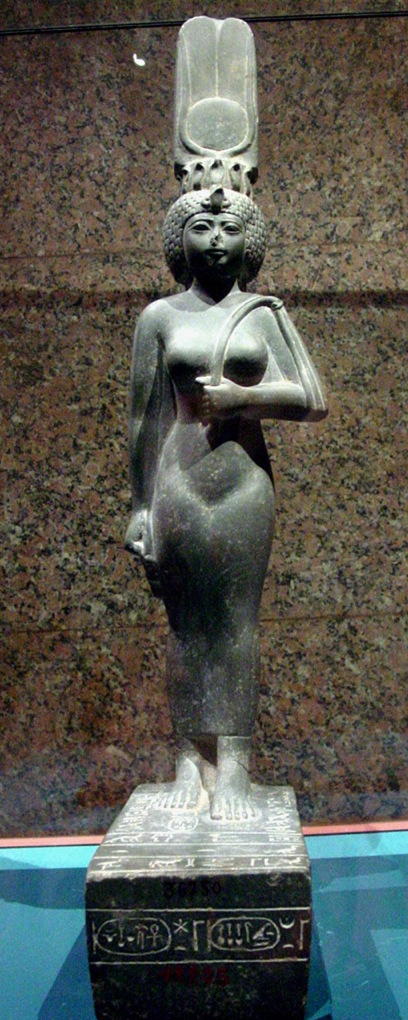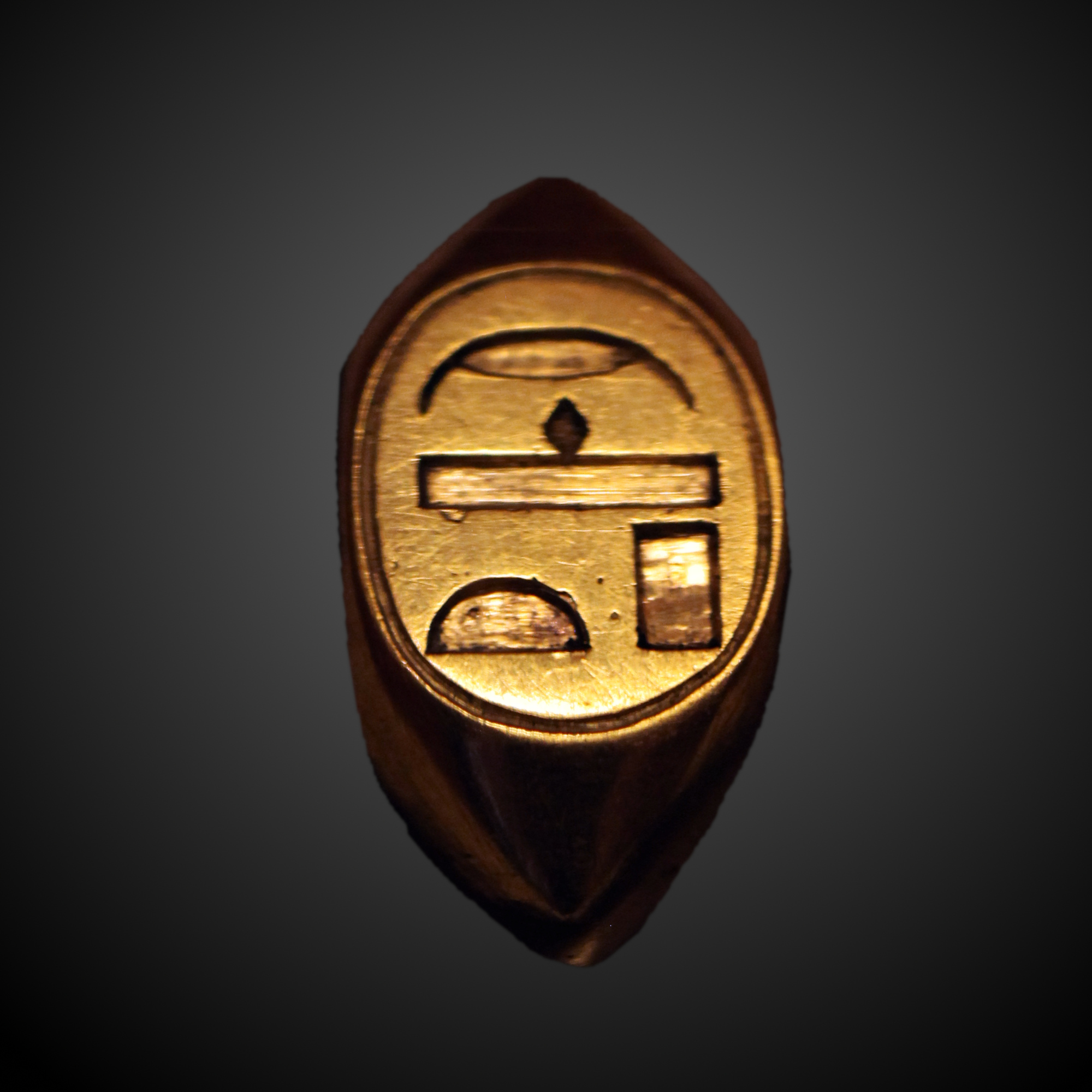|
Ahmose-Meritamun
Ahmose-Meritamun (or Ahmose-Meritamon) was a Queen of Egypt during the early Eighteenth Dynasty. She was both the older sister and the wife of Pharaoh Amenhotep I. She died fairly young and was buried in tomb TT358 in Deir el-Bahari. Biography Ahmose-Meritamun was the royal daughter of Ahmose I and Ahmose Nefertari, and became the Great Royal Wife of her younger brother Amenhotep I, pharaoh of Ancient Egypt in the Eighteenth Dynasty.Aidan Dodson & Dyan Hilton: The Complete Royal Families of Ancient Egypt. Thames & Hudson, 2004, , p.123, 127, 129 Meritamun took over the role of God's Wife of Amun from her mother Ahmose Nefertari. Other titles recorded for Meritamun include: lady of the two lands (''nbt-t3wy''), (Great) King's Wife (''ḥmt-nswt(-wrt)''), mistress of the entire two lands (''ḥnwt-tꜣwy-tm''), god's wife (''ḥmt-ntr''), united with the white crown (''ẖnmt-nfr-ḥḏt''), king's daughter (''sꜣt-nswt''), and king's sister (''snt-niswt''). The title king ... [...More Info...] [...Related Items...] OR: [Wikipedia] [Google] [Baidu] |
TT358
The Thebes, Egypt, Theban Tomb TT358 is located in Deir el-Bahari, part of the Theban Necropolis, on the west bank of the Nile, opposite to Luxor. The tomb belongs to the ''king's wife'' Ahmose-Meritamun, the sister and the wife of Pharaoh Amenhotep I.Aidan Dodson & Dyan Hilton: ''The Complete Royal Families of Ancient Egypt''. Thames & Hudson, 2004, , pp. 123, 127, 129 The tomb was later used for the additional burial of the King's daughter Nauny, Nany, who was a daughter of Pharaoh Pinedjem I. The tomb was excavated by Winlock during the 1929–30 excavations on behalf of the Metropolitan Museum of Arts. The tomb was discovered in the Court of the Temple of Queen Hatshepsut.H. E. Winlock, "The Egyptian Expedition 1928–1929: The Museum's Excavations at Thebes", ''The Metropolitan Museum of Art Bulletin'', Vol. 25, No. 11, Part 2: The EgyptianExpedition 1928–1929 (Nov., 1930), pp. 14–34 Ahmose Meritamun After excavating the outer corridor a large well was encountered. Plank ... [...More Info...] [...Related Items...] OR: [Wikipedia] [Google] [Baidu] |
God's Wife Of Amun
God's Wife of Amun ( Egyptian: ''ḥm.t nṯr n ỉmn'') was the highest-ranking priestess of the Amun cult, an important religious institution in ancient Egypt. The cult was centered in Thebes in Upper Egypt during the Twenty-fifth and Twenty-sixth dynasties (circa 740–525 BC). The office had political importance as well as religious, since the two were closely related in ancient Egypt. Although the title is first attested in the Middle Kingdom, its full political potential was not realized until the advent of the Eighteenth Dynasty. History of the office nTr-N41:X1 The shorter version of the title, God's Wife, is in use by the time of the Twelfth Dynasty, when the title is attested for the non-royal women Iy-meret-nebes and Neferu.Mariam F. Ayad (2009), ''God’s Wife, God’s Servant''. As early as the First Intermediate Period, there is mention of a "Wife of the God" in reference to the god Min. The full title of God's Wife of Amun is only used during and after ... [...More Info...] [...Related Items...] OR: [Wikipedia] [Google] [Baidu] |
Ahmose Nefertari
Ahmose-Nefertari (Ancient Egyptian: '' Jꜥḥ ms Nfr trj'') was the first Great Royal Wife of the 18th Dynasty of Ancient Egypt. She was a daughter of Seqenenre Tao and Ahhotep I, and royal sister and wife to Ahmose I. Her son Amenhotep I became pharaoh and she may have served as his regent when he was young. Ahmose-Nefertari was deified after her death. Family Ahmose-Nefertari was a daughter of Seqenenre Tao and Ahhotep I and the granddaughter of Senakhtenre and queen Tetisheri. Ahmose-Nefertari was born in Thebes, likely during the reign of Senakhtenre Ahmose.Forbes, Dennis C. Imperial Lives: Illustrated Biographies of Significant New Kingdom Egyptians. KMT Communications, Inc. 1998. Ahmose-Nefertari had quite a few siblings and half-siblings, including her future husband Ahmose and King's Son Ahmose Sapair, and her many sisters: Ahmose-Henutemipet, Ahmose-Tumerisy, Ahmose-Nebetta, Ahmose-Meritamon, Ahmose-Henuttamehu, Ahmose, and Ahmose-Sitkamose. Ahmo ... [...More Info...] [...Related Items...] OR: [Wikipedia] [Google] [Baidu] |
Ahmose I
Ahmose I (''Amosis'', ''Aahmes''; meaning "Iah (the Moon) is born") was a pharaoh and founder of the Eighteenth Dynasty of Egypt in the New Kingdom of Egypt, the era in which ancient Egypt achieved the peak of its power. His reign is usually dated to the mid-16th century BC at the beginning of the Late Bronze Age. During his reign, Ahmose completed the conquest and expulsion of the Hyksos, restored Theban rule over Lower- and Upper Egypt, and successfully reasserted Egyptian power in its formerly subject territories of Nubia and Canaan. He then reorganized the administration of the country, reopened quarry, quarries, mining, mines and trade routes and began massive construction projects of a type that had not been undertaken since the time of the Middle Kingdom of Egypt, Middle Kingdom. This building program culminated in the construction of the last Egyptian pyramids, pyramid built by native Egyptian rulers. Ahmose's reign laid the foundations for the New Kingdom of Egypt, New ... [...More Info...] [...Related Items...] OR: [Wikipedia] [Google] [Baidu] |
Ahmose-Nefertari
Ahmose-Nefertari (Ancient Egyptian: '' Jꜥḥ ms Nfr trj'') was the first Great Royal Wife of the 18th Dynasty of Ancient Egypt. She was a daughter of Seqenenre Tao and Ahhotep I, and royal sister and wife to Ahmose I. Her son Amenhotep I became pharaoh and she may have served as his regent when he was young. Ahmose-Nefertari was deified after her death. Family Ahmose-Nefertari was a daughter of Seqenenre Tao and Ahhotep I and the granddaughter of Senakhtenre and queen Tetisheri. Ahmose-Nefertari was born in Thebes, likely during the reign of Senakhtenre Ahmose.Forbes, Dennis C. Imperial Lives: Illustrated Biographies of Significant New Kingdom Egyptians. KMT Communications, Inc. 1998. Ahmose-Nefertari had quite a few siblings and half-siblings, including her future husband Ahmose and King's Son Ahmose Sapair, and her many sisters: Ahmose-Henutemipet, Ahmose-Tumerisy, Ahmose-Nebetta, Ahmose-Meritamon, Ahmose-Henuttamehu, Ahmose, and Ahmose-Sitkamose. Ahmose-Neferta ... [...More Info...] [...Related Items...] OR: [Wikipedia] [Google] [Baidu] |
Amenhotep I
Amenhotep I () or Amenophis I ( from Ancient Greek Ἀμένωφις), was the second Pharaoh of the 18th Dynasty of Egypt. His reign is generally dated from 1526 to 1506 BC (Low Chronology). He was a son of Ahmose I and Ahmose-Nefertari but had an elder brother, Ahmose-ankh, and was not expected to inherit the throne. However, sometime in the eight years between Ahmose I's 17th regnal year and his death, his heir apparent died and Amenhotep became crown prince. He then acceded to the throne and ruled for about 21 years.Manetho - translated by W.G. Waddell, Loeb Classical Library, 1940, p.109 Although his reign is poorly documented, it is possible to piece together a basic history from available evidence. He inherited the kingdom formed by his father's military conquests and maintained dominance over Nubia and the Nile Delta but probably did not attempt to maintain Egyptian power in the Levant. He continued the rebuilding of temples in Upper Egypt and revolutionized mortuar ... [...More Info...] [...Related Items...] OR: [Wikipedia] [Google] [Baidu] |
TT359
The Theban Tomb TT359, also referred to as the Tomb of Inherkhau, is located in Deir el-Medina, part of the Theban Necropolis, on the west bank of the Nile, opposite to Luxor. It is the burial place of the ancient Egyptian workman Inherkhau, who was ''Foreman of the Lord of the Two Lands in the Place of Truth'' during the reigns of Ramesses III and Ramesses IV during the 20th Dynasty.Porter, Bertha and Moss, Rosalind, ''Topographical Bibliography of Ancient Egyptian Hieroglyphic Texts, Statues, Reliefs and Paintings Volume I: The Theban Necropolis, Part I. Private Tombs'', Griffith Institute. 1970, pp. 421–424 Inherkhau was also the owner of the Tomb TT299. He was the son of the similarly titled Foreman Huy, and Inherkhau's wife was named Wab.Porter and Moss, p. 380 Tomb The outer chamber of the tomb contains offering scenes with Inherkau, his wife and their son Kenna. Scenes include depictions of the Book of Gates, the Book of the Dead, and two rows of Kings, Queens and Pr ... [...More Info...] [...Related Items...] OR: [Wikipedia] [Google] [Baidu] |
Ahhotep I
Ahhotep I (, alternatively Anglicized ''Ahhotpe'' or ''Aahhotep'', " Iah (the Moon) is satisfied") was an ancient Egyptian queen who lived , during the end of the Seventeenth Dynasty and beginning of the Eighteenth Dynasty of Egypt. Her titles include King's Daughter, King's Sister, Great (Royal) Wife, She who is joined to the White Crown, and King's Mother. She was the daughter of Queen Tetisheri and Pharaoh Senakhtenre Ahmose, and was probably the sister, as well as the queen consort, of Pharaoh Seqenenre Tao. Ahhotep I had a long and influential life, and is believed to have governed as a regent for her young son, Ahmose I, until he was old enough to rule. A stela found at Karnak praises Ahhotep's abilities as a leader, and the cult of Amenhotep I continued to remember Ahhotep after her death, up until at least the Twenty-first Dynasty. While the 19th-century discovery of two separate coffins in Egypt set off debates about Ahhotep's identity and true burial place—w ... [...More Info...] [...Related Items...] OR: [Wikipedia] [Google] [Baidu] |
Sitamun
Sitamun, also Sitamen, Satamun; , "daughter of Amun" (c. 1370 BCE–unknown) was an ancient Egyptian princess and queen consort during the 18th Dynasty. Family Sitamun is considered to be the eldest daughter of Pharaoh Amenhotep III and his Great Royal Wife Tiye. She was later married to her father around Year 30 of Amenhotep III's reign. The belief that Sitamun was a daughter of Amenhotep and Tiye is based on the presence of objects found in the tomb of Yuya and Thuya, Queen Tiye's parents, especially a chair bearing her title as the king's daughter. Biography Sitamun is very well attested, most notably in the tomb of Yuya and Thuya where three finely made chairs were discovered. As these chairs were used, and are of progressively larger size, it is assumed they belonged to Sitamun as she was growing up. They were then placed in her grandparents' tomb in the tradition of placing objects which had meaning in the deceased person's life. She is also depicted on the stele of her nurs ... [...More Info...] [...Related Items...] OR: [Wikipedia] [Google] [Baidu] |
Arthritis
Arthritis is a general medical term used to describe a disorder that affects joints. Symptoms generally include joint pain and stiffness. Other symptoms may include redness, warmth, Joint effusion, swelling, and decreased range of motion of the affected joints. In certain types of arthritis, other organs such as the skin are also affected. Onset can be gradual or sudden. There are several types of arthritis. The most common forms are osteoarthritis (most commonly seen in weightbearing joints) and rheumatoid arthritis. Osteoarthritis usually occurs as an individual ages and often affects the hips, knees, shoulders, and fingers. Rheumatoid arthritis is an autoimmune disorder that often affects the hands and feet. Other types of arthritis include gout, lupus, and septic arthritis. These are inflammatory based types of rheumatic disease. Early treatment for arthritis commonly includes resting the affected joint and conservative measures such as heating or icing. Weight Weight ... [...More Info...] [...Related Items...] OR: [Wikipedia] [Google] [Baidu] |







